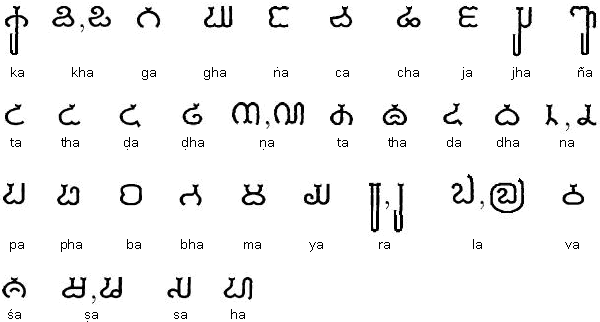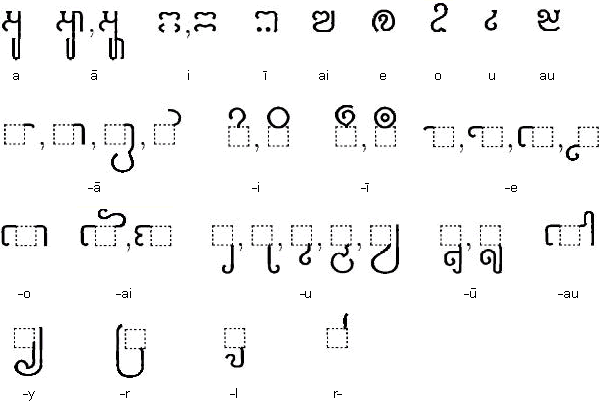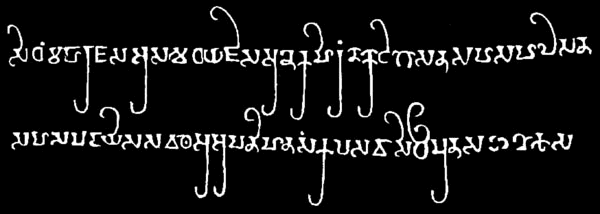Pallava

The Pallava script was developed in southern India during the
Pallava dynasty, (ca. 3rd-5th century AD) The Pallava script was
based on the Brahmi script and consists
of a matched set of symbols for consonants, as well as ways to
write consonant clusters.
At first the script was used to write Sanskrit, varieties of
Prakrit, including Pali, and a number of other languages. Later
it became popular for religious and politcal inscriptions on
stone monuments and for 500 years it was used in this way, with
alterations and adaptations, to write most of the languages
of Southeast Asia.
Many other scripts developed from, or were influenced by Pallava,
including Telugu, Kannada, Tamil, Malayalam, Sinhala, Burmese, Khmer,
Lanna, Thai, Lao, Cham, Javanese, Balinese, Buginese and Sundanese.
The script is also known as Southern Gupta Brahmi, proto-Kannada,
Tamil Grantham, and by a number of other names.
Notable features
- Type of writing system: syllabic alphabet
- Direction of writing: left to right in horizontal lines
Pallava script
The letter forms shown are based on inscriptions from the 7th century AD.
Consonants

Vowels and diacritics

Other Pallava symbols

Sample text
This text comes from India and dates from the 3rd century AD.

Transliteration

Information and images compiled by Ian James:
http://www.skyknowledge.com/pallava.htm
Links
Information about Pallava alphabet, language and people
http://www.skyknowledge.com/pallava.htm
http://www.tamilnation.org/heritage/pallava/
http://en.wikipedia.org/wiki/Pallava
http://www.kamat.com/kalranga/deccan/pallavas.htm
http://www.iranchamber.com/history/articles/india_parthian_colony1.php
http://www.indianetzone.com/23/civilization_culture_pallavas.htm
